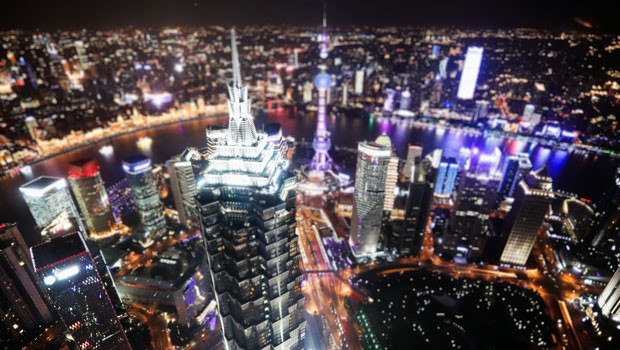Asia report: Most markets rise on wave of China data

Asia-Pacific stock markets enjoyed a positive session on Friday, propelled by better-than-expected economic figures from China for August.
Patrick Munnelly at TickMill said Asia’s gains followed the positive global trend driven by robust US economic data, a dovish rate hike from the European Central Bank, and the People's Bank of China's cut in the reserve requirement ratio (RRR).
“Additionally, better-than-expected Chinese economic data provided further support,” Munnelly noted.
“SoftBank saw a boost after its subsidiary, Arm, saw a 25% increase in its US debut.
“The Hang Seng index and the Shanghai Composite [were] lifted by encouraging Chinese activity data; industrial production and retail sales in China exceeded expectations.”
Most equity markets buoyed by encouraging global data
Japan’s Nikkei 225 ascended 1.1% to settle at 33,533.09 points, while the broader Topix index grew 0.95% to conclude at 2,428.38.
Tokyo Gas Co emerged as a top performer on Tokyo’s benchmark, rising 4.62%, closely followed by Panasonic, which surged 4.36%.
Sumitomo Dainippon Pharma also saw commendable gains, appreciating by 4.18%.
China stood out as an exception in the region's bullish trend, as the Shanghai Composite edged down 0.28% to 3,117.74, and the Shenzhen Component receded 0.52% to finish at 10,144.60.
On the downside, Holsin Engineering Consulting Group plunged 8.23%, and Dalian Thermal Power declined by 7.5%.
Hong Kong’s Hang Seng Index managed gains of 0.75% to reach 18,182.89.
Leading the gains was WuXi Biologics, which leapt 5.01%, while Sunny Optical Technology Group and Zijin Mining Group trailed with increments of 3.29% and 2.81%, respectively.
In South Korea, the Kospi climbed by an identical percentage as Japan's Nikkei, advancing 1.1% to a close of 2,601.28.
POSCO Holdings and DB Insurance were notable gainers, rising by 5.61% and 4.68%, respectively.
The upward momentum persisted down under as Australia's S&P/ASX 200 added 1.29% to wrap up at 7,279.00.
Life360 and Washington H Soul Pattinson were standout performers, ascending over 6.5%.
Meanwhile, New Zealand's S&P/NZX 50 recorded a modest climb, ticking up by 0.3% to end at 11,347.73.
Pacific Edge and Sky Network Television were the leaders, gaining 5% and 4.2% respectively.
On the currencies front, the dollar was last 0.23% stronger on the yen, trading at JPY 147.81.
The greenback was meanwhile weaker against its Aussie and Kiwi counterparts, losing 0.18% on the former to AUD 1.5500 and dipping 0.06% against the latter to change hands at NZD 1.6906.
In the oil sector, Brent crude futures were up 0.38% on ICE to $94.06 per barrel, while the NYMEX quote for West Texas Intermediate inched 0.42% to price at $90.54.
Fresh data suggests stabilisation in Chinese economy
China's performance stabilised in a wave of new economic data, following a series of underwhelming metrics in previous months.
August saw retail sales and industrial output outpacing forecasts, indicating a positive economic trend.
Specifically, the growth rate of Chinese retail sales saw a significant increase last month, surging to 4.6% compared to July's 2.5%.
That figure also surpassed the anticipated 3% rise projected by financial analysts.
Notably, there was a marked uptick in discretionary spending, evidenced by the accelerated sales of products such as cosmetics, smartphones, and jewellery.
However, Duncan Wrigley, chief China economist at Pantheon Macroeconomics, pointed out that September's data likely reflected the impact of heavy rains and flooding in Guangdong.
“The rise in discretionary consumption spending in August is likely related to summer tourism behaviour,” he said.
“We will be looking for this to continue before assessing a significant pick up in confidence.”
In the industrial sector, China recorded a 4.5% year-on-year augmentation in August - a rise from the 3.7% recorded in July and ahead of the 3.9% growth that economists had projected.
However, some areas observed a slight decline.
The growth in fixed asset investment softened to 3.2%, a marginal dip from 3.4% in the preceding month, and fell below the anticipated 3.3%.
The situation in the property market remains concerning, with property investment dropping further to -8.8% year-on-year in August from July's -8.5%.
Additionally, the pace of infrastructure spending also decelerated, settling at 3.2% from July's 3.4%.
Late Thursday, the People's Bank of China slashed the reserve requirement ratio (RRR) by 25 basis points.
The move was expected to inject approximately CNY 500bn of long-term liquidity into the banking sector.
It was the second time the bank had reduced the RRR this year, following a similar move in March.
“We see that RRR cut as aiming to boost banks’ lending capacity and facilitate fiscal stimulus, notably the accelerated issuance of local government special bonds, which has pushed up one-year Chinese government bond yields recently,” Duncan Wrigley added.
Reporting by Josh White for Sharecast.com.